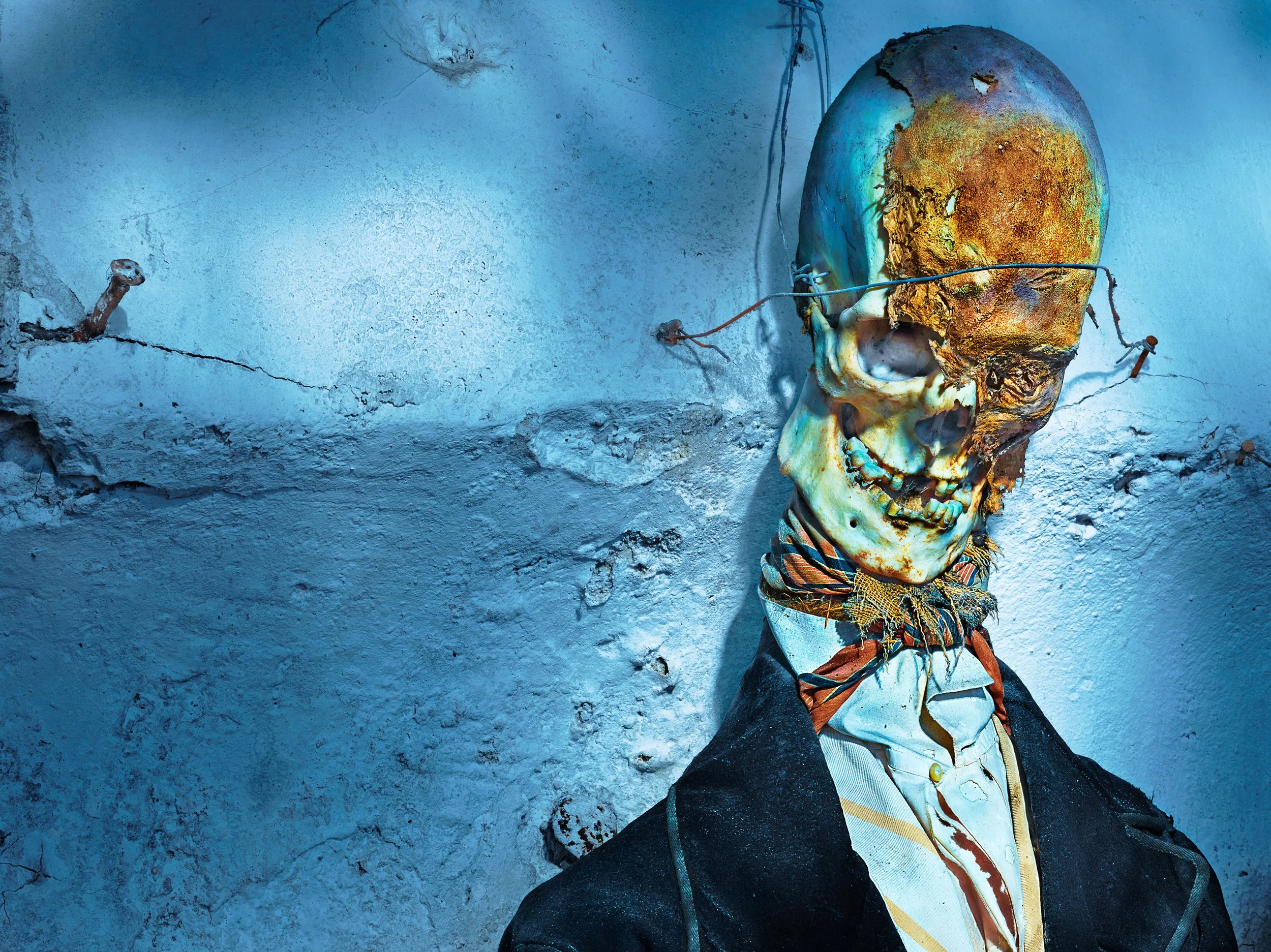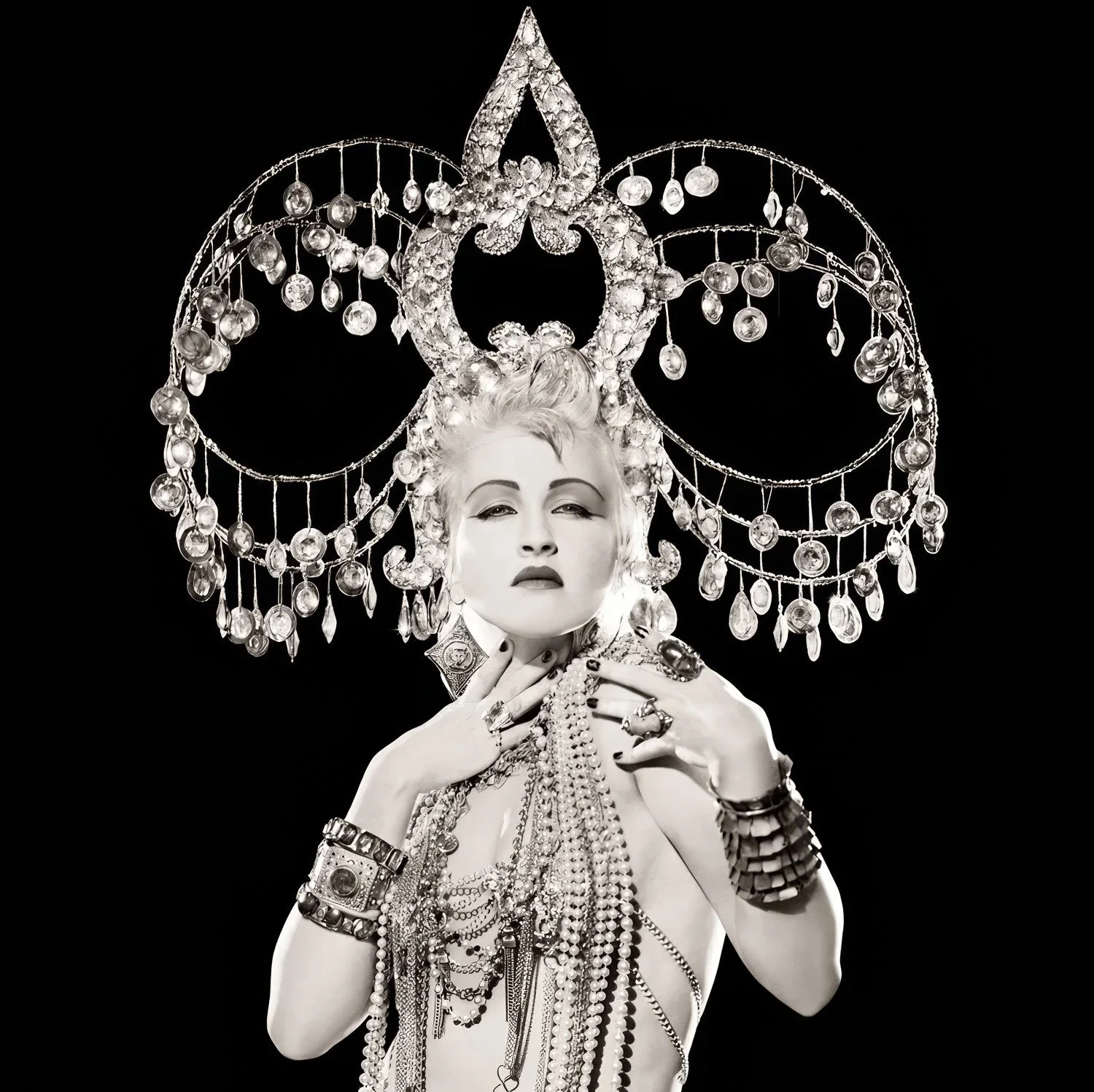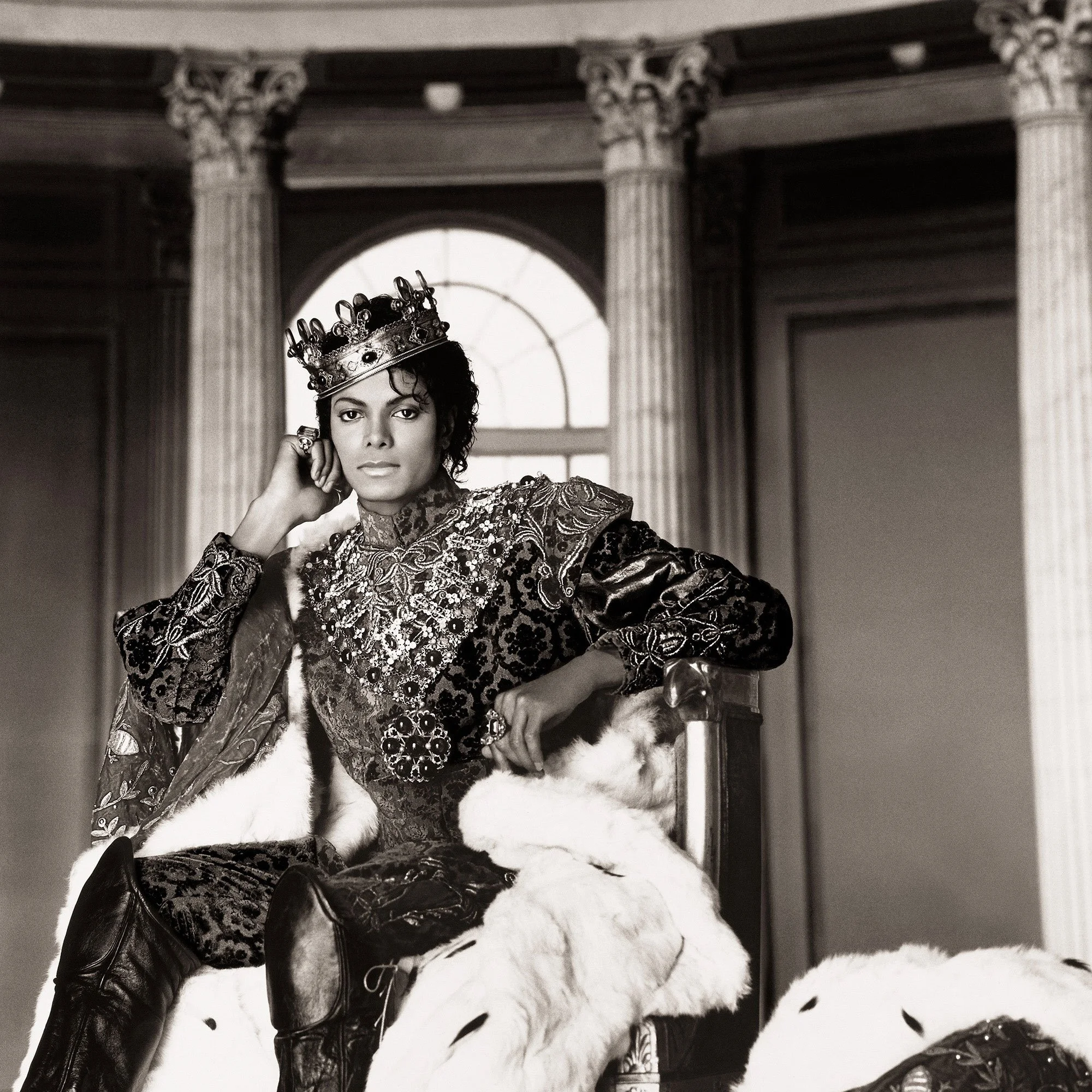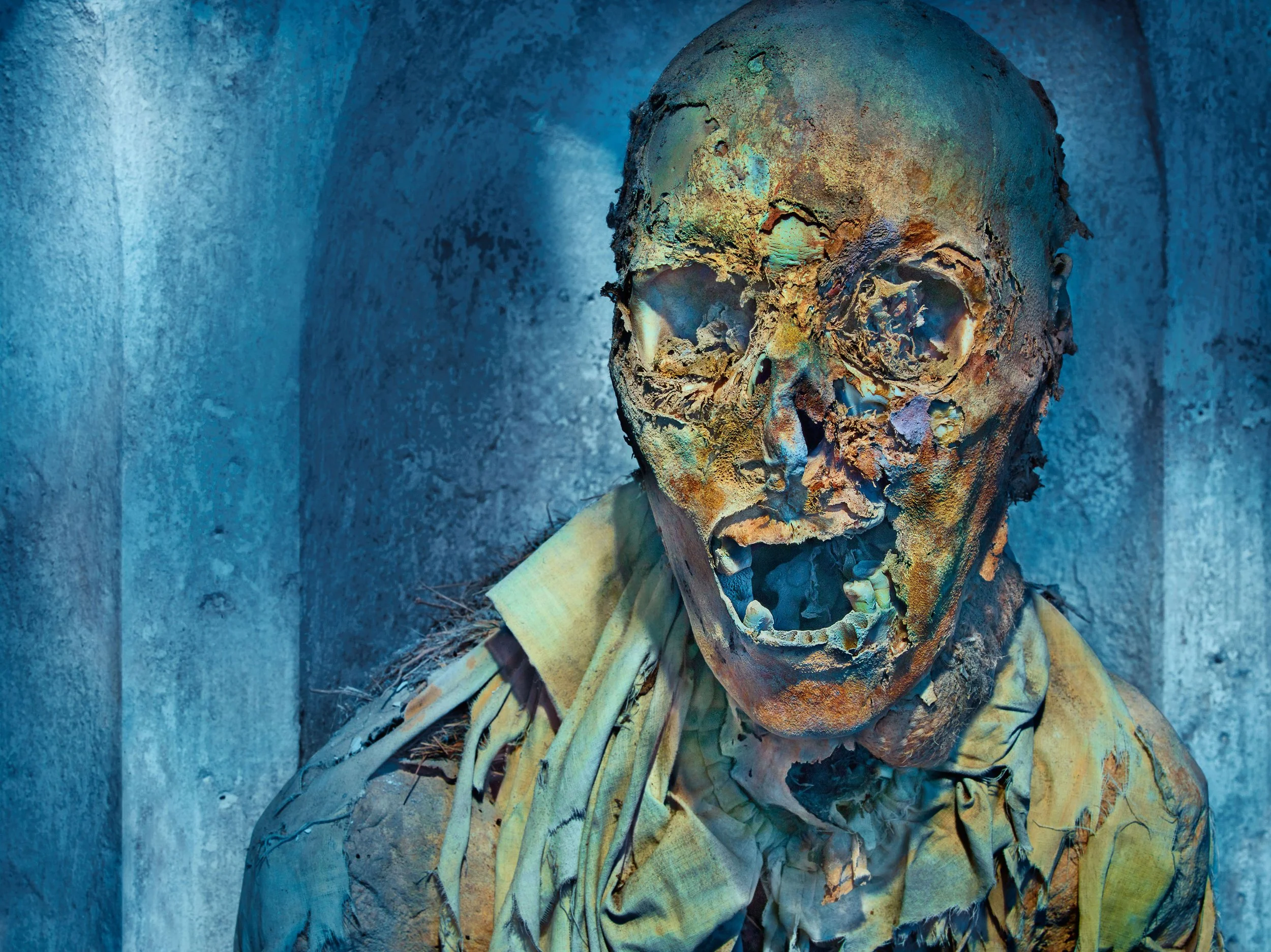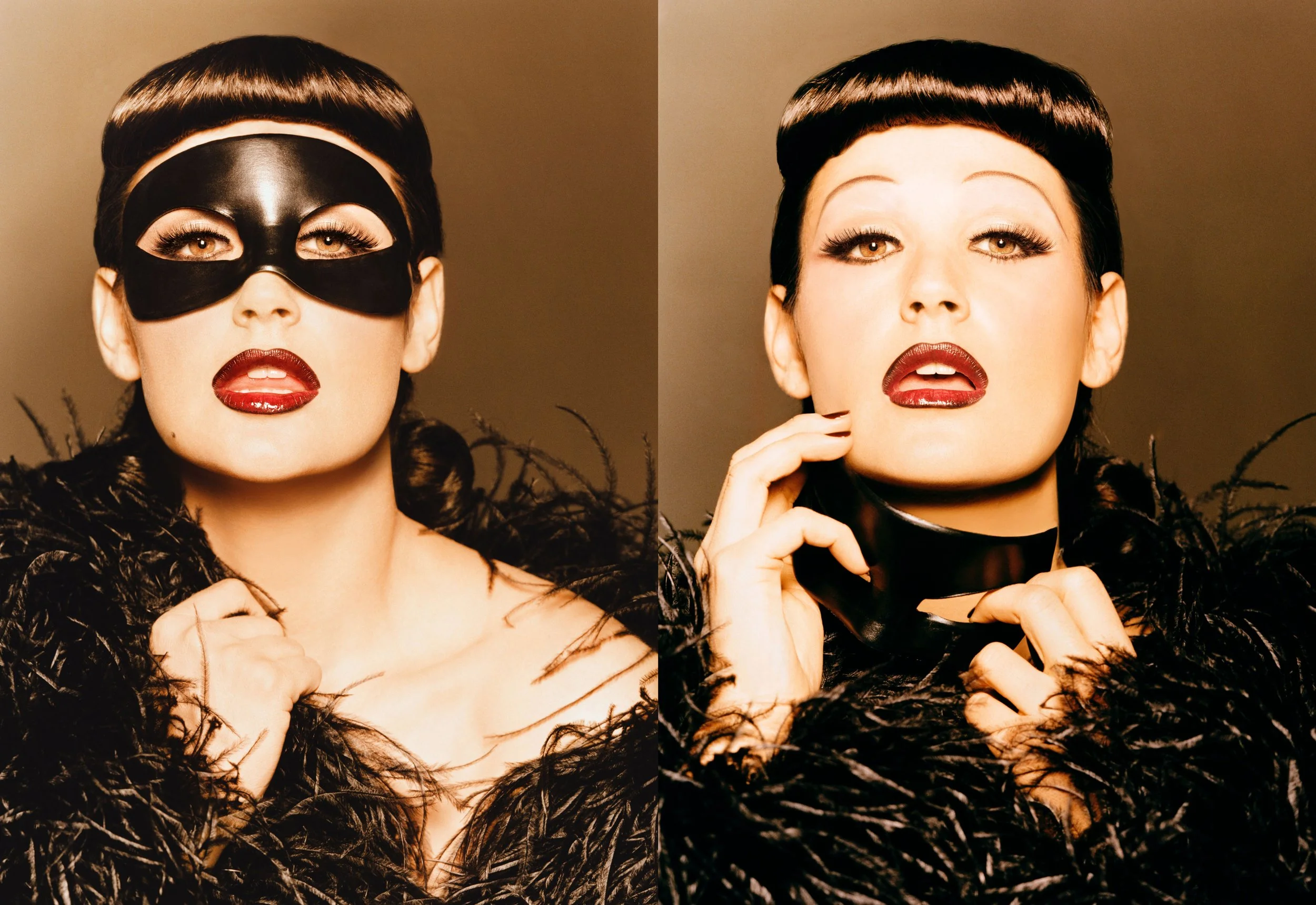
November 2025
Vanitas: Eros and Thanatos in Hollywood and the Catacombs
A photo essay by Janina Picard and Saul Appelbaum, after Matthew Rolston’s Vanitas: The Palermo Portraits
Matthew Rolston, Nicki Minaj, Kaleidoscope I, Los Angeles, 2010. From the series beautyLIGHT: Pictures at a Magazine, © Matthew Rolston. Courtesy Fahey/Klein Gallery, Los Angeles
What you are now, we used to be. What we are now, you will become.
– Sign at the entrance to the Capuchin Catacombs, Palermo, in Vanitas
At Curator, we’re trying a new format: the photo essay. Pull-quote heavy, image-forward, a space where image and text provoke rather than explain.
Drawing on Philip Gefter’s reading in Vanitas: The Palermo Portraits (Nazraeli Press, 2025), this essay traces two parallel threads: Gefter’s exploration of Freud’s life and death drives, Eros and Thanatos, in Matthew Rolston’s work and Janina Picard’s Jungian dreamwork with Saul Appelbaum. Rolston moves from Hollywood’s myth of eternal beauty toward a direct engagement with mortality. Picard and Appelbaum frame the artist as a mediator between worlds, translating unconscious material into creative form. Both track how life and death intersect in the act of making, and how art navigates that tension.
Matthew Rolston, Untitled (Long Face), Palermo, 2013. From the series Vanitas: The Palermo Portraits, © Matthew Rolston. Courtesy Fahey/Klein Gallery, Los Angeles
Rolston, once a Hollywood mythmaker, captured glamour as a mask over decay. “My camera is a fabulous liar.” In Vanitas, that lie falls away. He photographs Palermo’s dead, aristocrats, friars, children, posed in Sunday best, lit in bruised tones and Marian blue.
Hollywood glamour is itself a negation of aging and death. It’s a total denial, perhaps the apogee of Western culture’s denial of death, where stars are imagined as eternal. They’re not. They age. We all age. I wanted to confront that and look death in the face, because the ultimate vanity is to try to deny it.
– Matthew Rolston in conversation with Janina Picard
1.
Rolston’s Vanitas evokes the reflection that Hollywood, as we have known it, is dead. What remains, and what comes next, becomes a question of cultural and artistic rebirth.
Matthew Rolston, Cyndi Lauper, Headdress, Los Angeles, 1986. From the series Hollywood Royale: Out of the School of Los Angeles, © Matthew Rolston. Courtesy Fahey/Klein Gallery, Los Angeles
Freud’s drives of life and death guide the work, but Jung’s vision of wholeness shapes it. The mummies act as emissaries of the collective unconscious, frozen gestures as active imaginations. Viewing them is a waking dream, a confrontation with the shadow.
The work attempts to demonstrate that the human experience exists in a long, fragile yet miraculous continuity… the unity among all humanity in the face of existential mysteries.
– Matthew Rolston, Vanitas
2.
The artist is the conduit of the times, the artwork occupying a liminal space between life and death, Eros and Thanatos, dream and material form.
Matthew Rolston, Untitled (Eyelash), Palermo, 2013. From the series Vanitas: The Palermo Portraits, © Matthew Rolston. Courtesy Fahey/Klein Gallery, Los Angeles
Each image is an initiation: silk, bone, a collapsing smile, Eros staged within Thanatos.
Ashes to ashes, stardust to dust.
– Philip Gefter, Vanitas
3.
The artist functions as an intermediary between worlds, dissolving the boundaries of selfhood in the act of creation, much like the dissolution experienced within the dream state.
Matthew Rolston, Michael Jackson, King, Los Angeles, 1985. From the series Hollywood Royale: Out of the School of Los Angeles, © Matthew Rolston. Courtesy Fahey/Klein Gallery, Los Angeles
Hollywood is the world of mummified beauty: youthful surfaces hiding decay. Celebrities are persona; the Palermo figures, shadow. One denies death; the other accepts it. Together, they form a psychic mirror.
We artists cannot tread the path of Beauty without Eros keeping company with us and appointing himself as our guide.
– Thomas Mann, Death in Venice, in Vanitas
4.
This process can be understood as a form of embodied dreamwork, a practice wherein the artist is the vessel through which the unconscious finds expression in creative form.
Matthew Rolston, Untitled (Scream), Palermo, 2013. From the series Vanitas: The Palermo Portraits, © Matthew Rolston. Courtesy Fahey/Klein Gallery, Los Angeles
Rolston shows the journey from fame to stillness, glamour to grace. Gold becomes dust; drapery softens; eye sockets turn into mandalas of absence.
It’s a simple fact: we will die. I am here to look at death square in the face.
– Matthew Rolston, Vanitas
5.
In the wake of this dying paradigm, one might ask where such a shift leaves a Hollywood glamour photographer like Matthew Rolston, approaching the later stages of his career.
Matthew Rolston, Demi Moore, Diptych, (L-R) Portrait I, Portrait II, New York, 1996. From the series beautyLIGHT: Pictures at a Magazine, © Matthew Rolston. Courtesy Fahey/Klein Gallery, Los Angeles=
Vanitas is the collective dream of a culture obsessed with immortality. Beauty masks death; death is the final gesture. The images provoke, without judgment.
"Vanitas vanitatum et omnia vanitas" – Ecclesiastes, 1:2 – translates as "vanity of vanities; all is vanity"
– Philip Gefter, Vanitas
6.
The answer appears to lie in a communion with the archetype of death itself, a dreamlike ritual.
Matthew Rolston, Untitled (Leather I), Palermo, 2013. From the series Vanitas: The Palermo Portraits, © Matthew Rolston. Courtesy Fahey/Klein Gallery, Los Angeles
Matthew Rolston: Vanitas, 2025
ArtCenter College of Design
Pasadena
Fahey/Klein Gallery
Los Angeles
Daido Moriyama Museum/Daido Star Space
Los Angeles
Leica Gallery
Los Angeles
Matthew Rolston is an artist, photographer, and director celebrated for his distinctive lighting, meticulous art direction, and for redefining Hollywood glamour in contemporary visual culture. Born in Los Angeles, he studied at Chouinard Art Institute, Otis College of Art & Design, and the ArtCenter College of Design in Pasadena, where he later received an honorary doctorate.
Over a career spanning more than four decades, Rolston has created iconic images for magazines including Vogue, Vanity Fair, Rolling Stone, and The New York Times Magazine, and has directed commercials, music videos, and films. His photographs are held in major museum collections, including the J. Paul Getty Museum, the Museum of Modern Art in New York, and the Smithsonian National Portrait Gallery, cementing his influence on both commercial and fine-art photography.
Janina Picard is an actor, writer, director and producer whose work spans film, television and theatre. Among her acting credits, she appears in The Ministry of Ungentlemanly Warfare (2024) As a filmmaker, she directed and co‑wrote the short Was reimt sich auf morgen (2022). Her bilingual background and multilingual fluency (German, English, French, Italian) further enrich her international and cross‑cultural creative identity.
Alongside her screen work, Picard serves as a certified dream‑work facilitator, guiding artists through processes of spontaneous creation and unconscious material — a practice that echoes in her own hybrid media projects. With roots in theatre training and methods from the Actors Studio under mentors such as Sandra Seacat and Ellen Burstyn, her approach situates the artist as intermediary, navigating between interior vision and external form.
